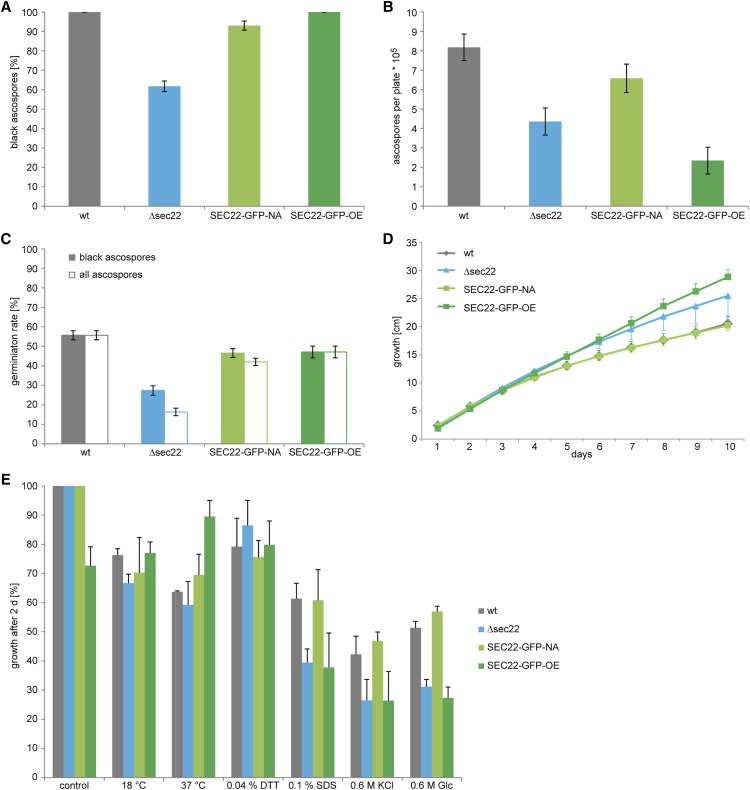Figure 4.
Analysis of ascospore production and germination, and stress resistance in the Δsec22 mutant and complemented strains. Strains are the same as in Figure 3. (A) Proportion of black ascospores that are ejected from perithecia. Error bars give standard deviations for three independent biological replicates. (B) Number of ejected ascospores per Petri dish. Error bars give SDs for three independent biological replicates. (C) Germination rate of ascospores. The wild type and strain SEC22-GFP-OE eject only black spores; therefore, the germination rate is identical for black and all ascospores. Strains Δsec22 and SEC-22-NA eject a certain proportion of nonmelanized ascospores (A), none of which were observed to germinate, thereby reducing the germination rate of all ascospores. Error bars give standard deviations of three independent biological replicates. (D) Vegetative growth was analyzed on race tubes over 10 d. Error bars give SDs of three independent biological replicates, for clarity, only one direction (plus or minus) is shown for each error bar. (E) Stress resistance was analyzed on SWG in petri dishes with the indicated stress-inducing agents at the following concentrations: dithiothreitol (DTT) 0.04%, sodium dodecyl sulfate (SDS) 0.1%, KCl 0.6 M, glucose 0.6 M. The wild type was used as reference for the control. For each stress-inducing condition, the growth on the control plates for the corresponding strain was used as reference. Error bars indicate SDs for two independent biological replicates, each with three technical replicates.

